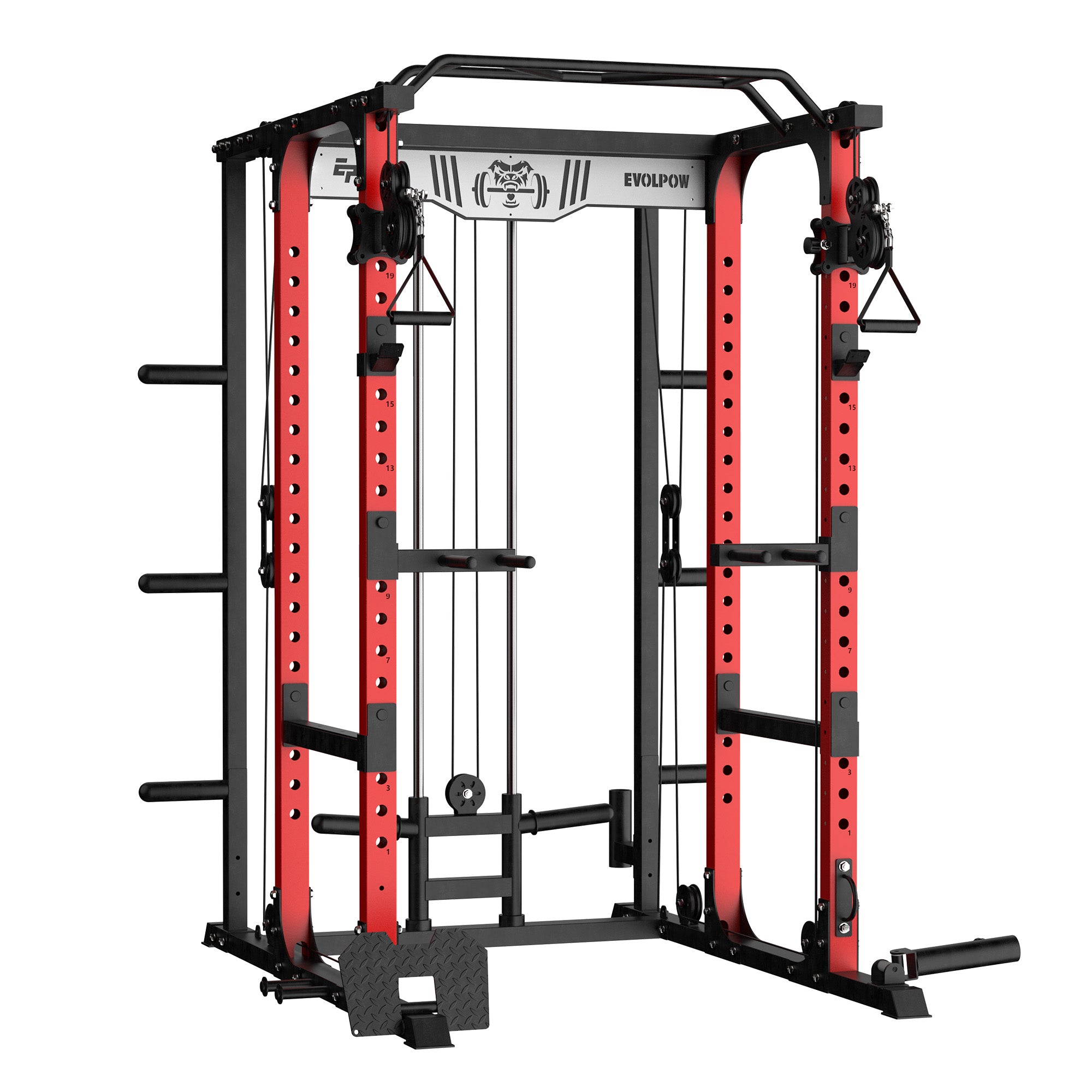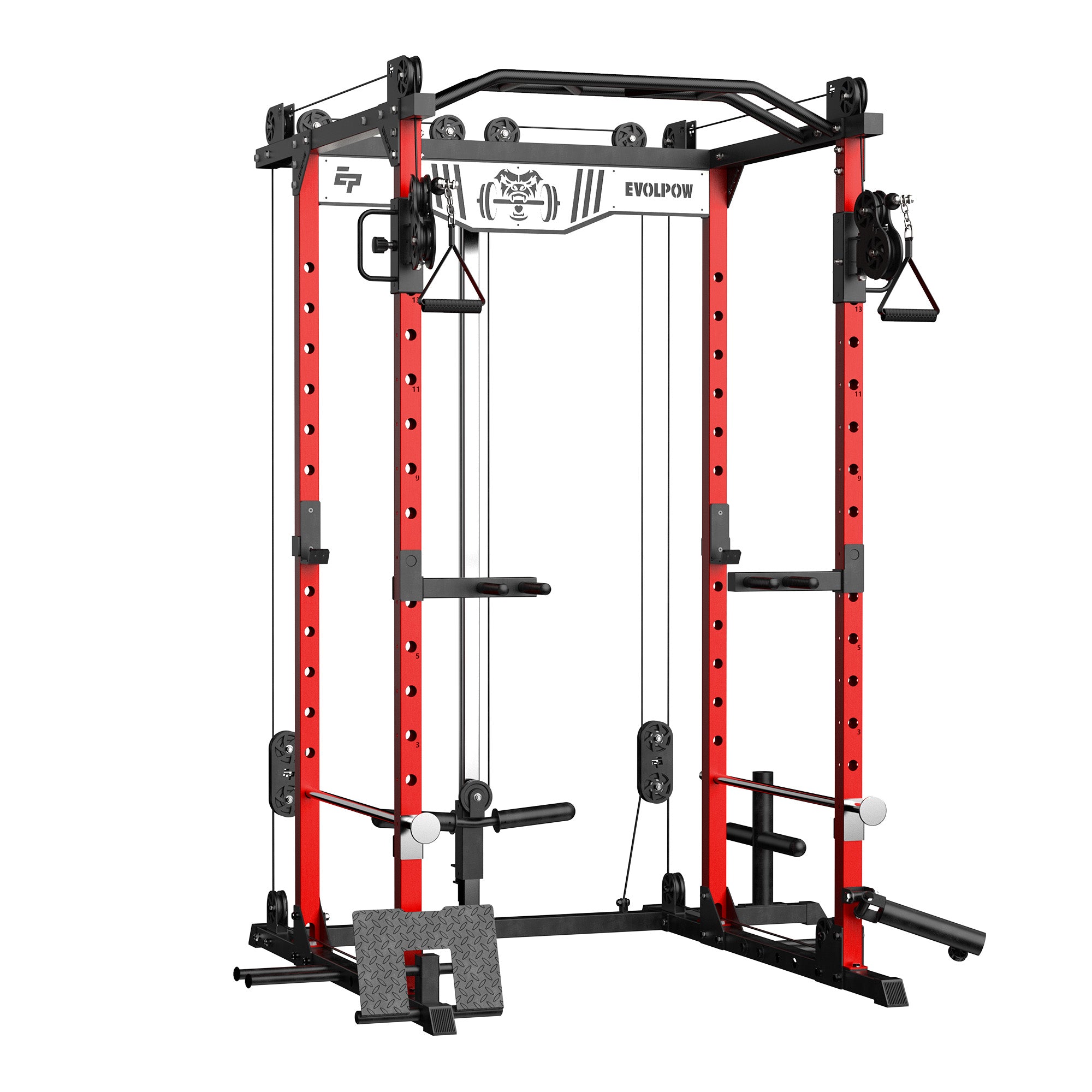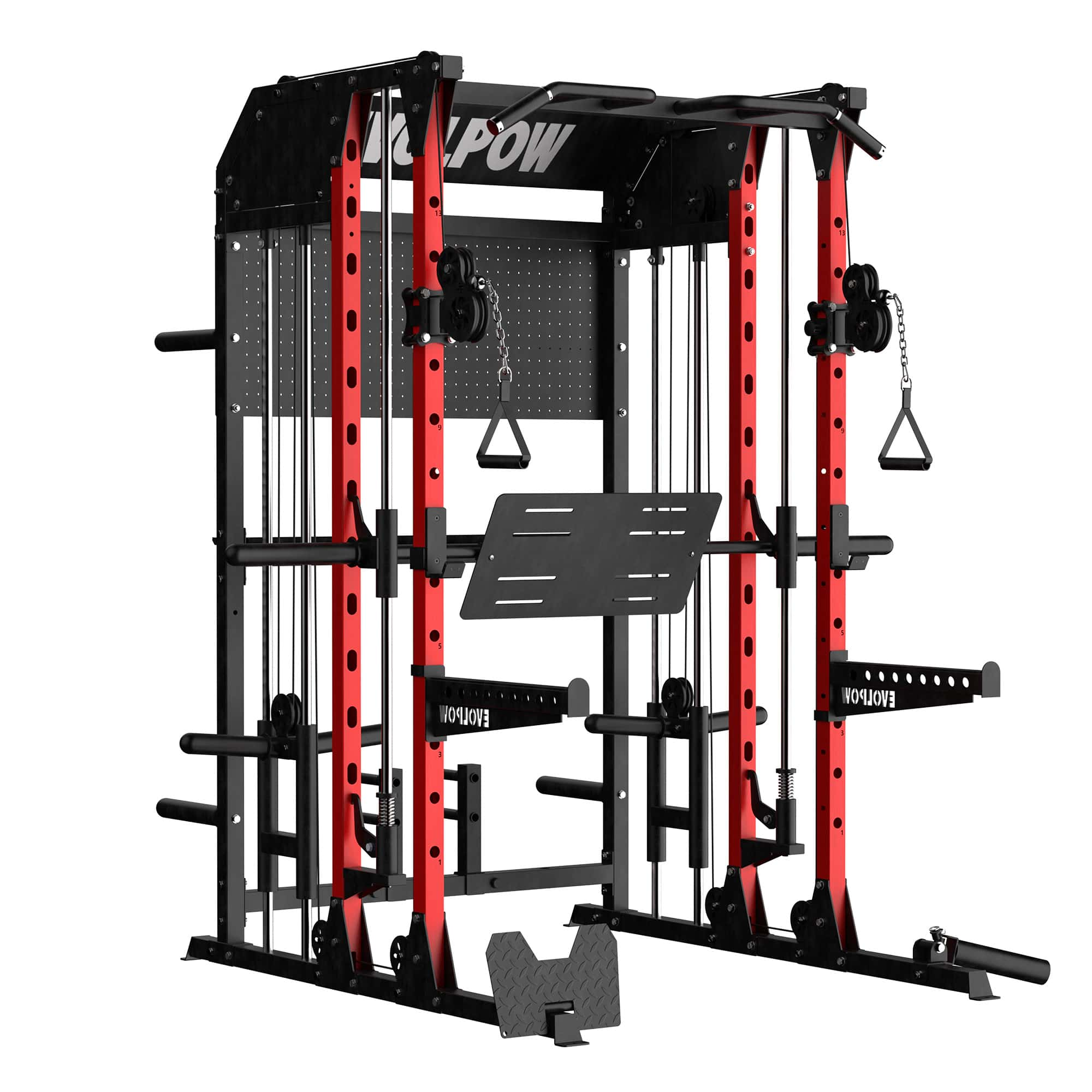In the world of fitness, effective recovery is just as crucial as the workouts themselves. Especially after muscle training with high intensity using the multi gym machine. If you don’t recover in the right way in time, you will feel sore and tired the next day. That's why recovery tools like foam rollers and massage guns have become indispensable to many athletes' and fitness enthusiasts' routines. These devices help alleviate muscle soreness, improve flexibility, and enhance overall performance. In this blog, we'll delve into how to use these tools effectively, their benefits, and tips for integrating them into your gym routine for muscle gain.
CONTENTS
Understanding Foam Rollers and Massage Guns
Using Foam Rollers for Effective Recovery
Using Massage Guns for Effective Recovery
Combining Foam Rollers and Massage Guns for Optimal Recovery
Safety Tips and Considerations
Conclusion
Understanding Foam Rollers and Massage Guns
Foam Rollers

What Is a Foam Roller?
Benefits of Foam Rolling
-
Increased Blood Flow: Foam rolling stimulates blood flow to the muscles, which can help in the recovery process and reduce soreness.
-
Improved Flexibility: Regular use can help improve range of motion and flexibility by releasing tight muscles and fascia.
-
Reduced Muscle Soreness: It helps in breaking down muscle adhesions and reducing delayed onset muscle soreness (DOMS).
-
Enhanced Performance: By addressing muscle tightness and improving blood flow, foam rolling can enhance overall workout performance.
Massage Guns

What Is a Massage Gun?
A massage gun, or percussive therapy device, uses rapid, repetitive pulses to target specific muscle groups. The device's vibration helps to stimulate blood flow, decrease muscle tension, and improve overall recovery. Massage guns come with various attachments and speed settings, allowing for a customized massage experience.
Benefits of Massage Guns
-
Deep Tissue Massage: The percussive action of massage guns helps reach deep muscle tissues that might be difficult to address with foam rollers.
-
Increased Blood Flow: By promoting circulation, massage guns aid in quicker muscle recovery and reduction of soreness.
-
Reduction of Muscle Tension: They help in relaxing tight muscles and reducing stiffness.
-
Enhanced Mobility: Regular use can improve joint mobility and overall muscle function.
Using Foam Rollers for Effective Recovery
Installing the Foam Roller
-
Density: Softer rollers are ideal for beginners or those with sensitive muscles, while firmer rollers provide a deeper massage.
-
Texture: Smooth rollers offer a gentle massage, while textured rollers (with bumps or ridges) provide a more intense experience.
Foam Rolling Technique
-
Warm-Up: Begin with a light warm-up before using the foam roller to prepare your muscles.
-
Positioning: Place the foam roller under the muscle group you wish to target. For example, to roll out your quads, lie face down and position the roller under your thighs.
-
Rolling: Move slowly over the muscle, pausing on tender spots for 20-30 seconds. Maintain a steady, controlled pressure as you roll.
-
Breathing: Deep, relaxed breathing can help alleviate any discomfort and improve the effectiveness of the foam rolling.
-
Frequency: Incorporate foam rolling into your routine 1-2 times per day, especially after workouts, for 1-2 minutes per muscle group.
Common Areas to Foam Roll

-
Quadriceps: Lie face down with the roller under your thighs and roll from the hip to the knee.
-
Hamstrings: Sit with the roller under your thighs and roll from the knee to the buttocks.
-
Calves: Place the roller under your calves and roll from the ankle to the knee.
-
Back: Lie on your back with the roller under your upper back and roll from the shoulders to the lower back.
Using Massage Guns for Effective Recovery
Installing the Right Massage Gun
-
Intensity Levels: Opt for a massage gun with adjustable speed settings to cater to different muscle groups and preferences.
-
Attachments: Use different attachments for specific muscle groups (e.g., ball attachment for large muscles, fork attachment for joints).
Massage Gun Technique
-
Preparation: Choose the appropriate attachment and set the massage gun to a low speed. Gradually increase the intensity as needed.
-
Application: Hold the massage gun perpendicular to the muscle group. Move it slowly over the area, applying gentle pressure.
-
Duration: Use the massage gun for 1-2 minutes per muscle group. Avoid staying in one spot for too long to prevent irritation.
-
Frequency: Use the massage gun 1-2 times per day or as needed after intense workouts.
Common Areas to Target with a Massage Gun

-
Shoulders: Use the gun on your deltoids and upper back to alleviate tension from lifting or poor posture.
-
Legs: Target the quadriceps, hamstrings, and calves to enhance recovery and reduce stiffness.
-
Back: Apply the gun to your upper and lower back to relieve soreness from heavy lifting or prolonged sitting.
Combining Foam Rollers and Massage Guns for Optimal Recovery
For the best results, combine both foam rolling and massage gun techniques into your recovery routine:
-
Pre-Workout: Use the foam roller to warm up and increase blood flow to the muscles. This can help prepare your body for more intense exercises.
-
Post-Workout: After your workout, start with the foam roller to address muscle knots and release tension. Follow up with the massage gun to enhance blood flow and reduce soreness.
Although the combination of these two can effectively help you recover better, there are still some things to note.
-
Listen to Your Body: If you experience sharp pain or significant discomfort, stop using the tool and consult a healthcare professional.
-
Avoid Bony Areas: Focus on muscle tissue and avoid rolling or massaging directly over bones or joints.
-
Stay Hydrated: Drink plenty of water before and after using these tools to support muscle recovery and overall health.
Conclusion
Incorporating foam rollers and massage guns into your fitness routine can significantly enhance muscle recovery, reduce soreness, and improve overall performance. By understanding the benefits and proper techniques for using these tools, you can effectively address muscle tightness, boost flexibility, and promote quicker recovery. Whether you’re a seasoned athlete or just starting your fitness journey, these tools can be valuable assets in achieving your health and performance goals. For more insights and tips on fitness and recovery, visit EVOLPOW’s blog section and explore our range of quality products designed to support your active lifestyle.
For more information about EVOLPOW's fitness tools and resources, visit our official website.
FAQ
Q: What is the main difference between a foam roller and a massage gun?
A: A foam roller uses self-myofascial release by rolling over muscles to alleviate tension, while a massage gun uses rapid, repetitive pulses to target deep muscle tissues for a percussive effect.
Q: Can I use a massage gun every day?
A: Yes, a massage gun can be used 1-2 times per day or as needed after intense workouts, but avoid overuse to prevent irritation.
Q: How can I effectively combine foam rolling and massage guns in my routine?
A: Use a foam roller before workouts to warm up and increase blood flow, and a massage gun afterward to enhance recovery and reduce soreness.
REFERENCE
https://www.shape.com/fitness/gear/equipment/foam-roller-vs-massage-gun
https://www.themanual.com/fitness/massage-gun-vs-foam-roller/
https://marathonhandbook.com/massage-gun-vs-foam-roller/
https://www.byrdie.com/foam-roller-vs-massage-gun-5201970
https://www.bustle.com/wellness/foam-rollers-vs-massage-guns






